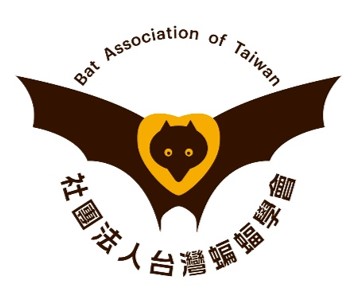蝙蝠研究
2019_利用形態與分子食性分析探討臺灣無尾葉鼻蝠的食蛛特性_黃羽萱
出版年份:2019
研究生:黃羽萱
分類:碩士論文
題目:利用形態與分子食性分析探討臺灣無尾葉鼻蝠的食蛛特性
Title:Spider utilization by the Formosan tailless leaf-nosed bat (Coelops frithii formosanus) based on morphological and molecular diet analysis
摘要:
食蟲性蝙蝠撿拾蜘蛛作為主要食物的報導不多,且利用的蜘蛛多僅能鑑定到目別。然而,蜘蛛種類眾多且生活特性多樣;依覓食功能群可分為:遊走蛛 (樹叢活動與地面活動類群) 與結網蛛 (圓網蛛、立體網蛛與片狀網蛛)。臺灣無尾葉鼻蝠 (Coelops frithii formosanus) 曾報導取食蜘蛛,但取食的蜘蛛類群尚未探討。此外,季節變動也可能會導致食物組成改變。利用排遺碎片形態探討食性不易鑑定至物種,而DNA巨量條碼分析技術可提供更精細的獵物資訊。本研究利用2016年9月至2018年5月9次調查所取得之臺東縣卑南鄉無尾葉鼻蝠洞穴內的排遺樣本,進行碎片形態與DNA巨量條碼分析。分別檢視無尾葉鼻蝠食性中蜘蛛科別的組成,並歸類取食的蜘蛛功能群及其生態特性,以推測覓食的棲地環境。此外,計算取食的蜘蛛體長範圍,以瞭解其覓食能力。再者,依照無尾葉鼻蝠族群的季節特性分為生殖期、變動期與度冬期,以分析不同時期蝙蝠取用蜘蛛的組成變化。形態分析中計算各科蜘蛛出現頻度與出現比例,分子食性分析則計算出現頻度與相對讀值比例,並分別推算取食的蜘蛛體長範圍。形態食性分析266顆排遺,鑑定出11科遊走蛛與5科結網蛛,出現比例分別為19.9%與80.1%。分子食性分析16個次世代樣本,鑑定出遊走蛛8科與結網蛛6科,讀值比例分別為64.2%與35.8%,並比對出12種蜘蛛。兩種方法推算利用最多的蜘蛛體長為0.41至0.80 cm。生殖期取食結網蛛讀值比例較高 (56.6%),而變動期與度冬期則為遊走蛛較高 (69.8%、81.3%)。相較其他食蛛蝙蝠,無尾葉鼻蝠取食不少遊走蛛,且多為灌叢活動,而地面活動的類別極少。生殖期蝙蝠取食大量蜘蛛,可能與此時環境蜘蛛資源豐富有關;而度冬期取食蜘蛛的量變少,推測低溫導致蜘蛛活動力下降,蝙蝠發現牠們的機率降低,轉而取食其他獵物。綜合上述,無尾葉鼻蝠應為兼具取食結網性與遊走性蜘蛛的蝙蝠,尤其生殖期蜘蛛資源對其十分重要,未來可針對牠們常利用的蜘蛛資源與覓食微棲地予以保護。
Abstract:
It is rarely reported that insectivorous bats gleaning spiders, and spiders are identified only to order. However, there are many spider species and diverse living propensity in the world. They can be grouping hunting-spiders (vegetation- and ground-active ones) and web-spiders (orb webs, tangle webs and sheet webs). Formosan tailless leaf-nosed bat (Coelops frithii formosanus) was found to eat spiders, but spider taxa eaten by bats was unclear. Besides, seasonal change may make their prey composition change. Fecal morphological analysis was difficult to identify species, but DNA metabarcoding analysis can provide fine taxonomical information. This study is during September 2016 to May 2018, including 9 investigates, and we collet Formosan tailless leaf-nosed bats’ feces from Taitung Country in order to morphological and molecules analysis. We realize spider family composition of diet of Formosan tailless leaf-nosed bats, and classifying spider guilds eaten by bats and ecological characteristics in order to speculate foraging habitat of bats. Besides, we know spider size eaten by bats to understand foraging ability of bats. Based on numbers of Formosan tailless leaf-nosed bat, it is divided into 3 time periods, reproductive period, changing period and winter period. We analysis spider composition changes in different period. We calculate frequency of occurrence and ratio of occurrence (PO) of spider family in morphological analysis, and also calculate frequency of occurrence and relative reads abundance (RRA) in molecular analysis. Spider size is estimated by two method. We used 266 feces in morphological analysis, and find 11 families hunting spiders (PO is 19.9%) and 5 families web spiders (80.1%). We also used 16 NGS samples in molecular analysis, and find 8 families hunting spiders (RRA is 64.2%) and 6 families web spiders (35.8%). Besides, 12 species are found in molecular analysis. Bats use the most 0.41 to 0.80 cm body length range of spiders. Web spiders are higher in reproductive period (RRA is 56.6%), but hunting spiders are both higher in changing period (69.8%) and winter period (81.3%). Formosan tailless leaf-nosed bat eats a few hunting spiders than other bat. Especially, it eats more vegetation-active spiders instead of ground-active ones. Bats eats many spiders in reproductive period, and it may be rich in spider resources in filed. Bats eat the least spiders in winter period. Because of the low temperature, it is lower probability to bats eating inactive spiders, and bat eat other prey which easier captured. The above, Formosan tailless leaf-nosed bat eat both web spiders and hunting spiders, and spider resources are important to bats especially the reproductive period. We can protect spider resources and their habitat to keep the bats in the future.
